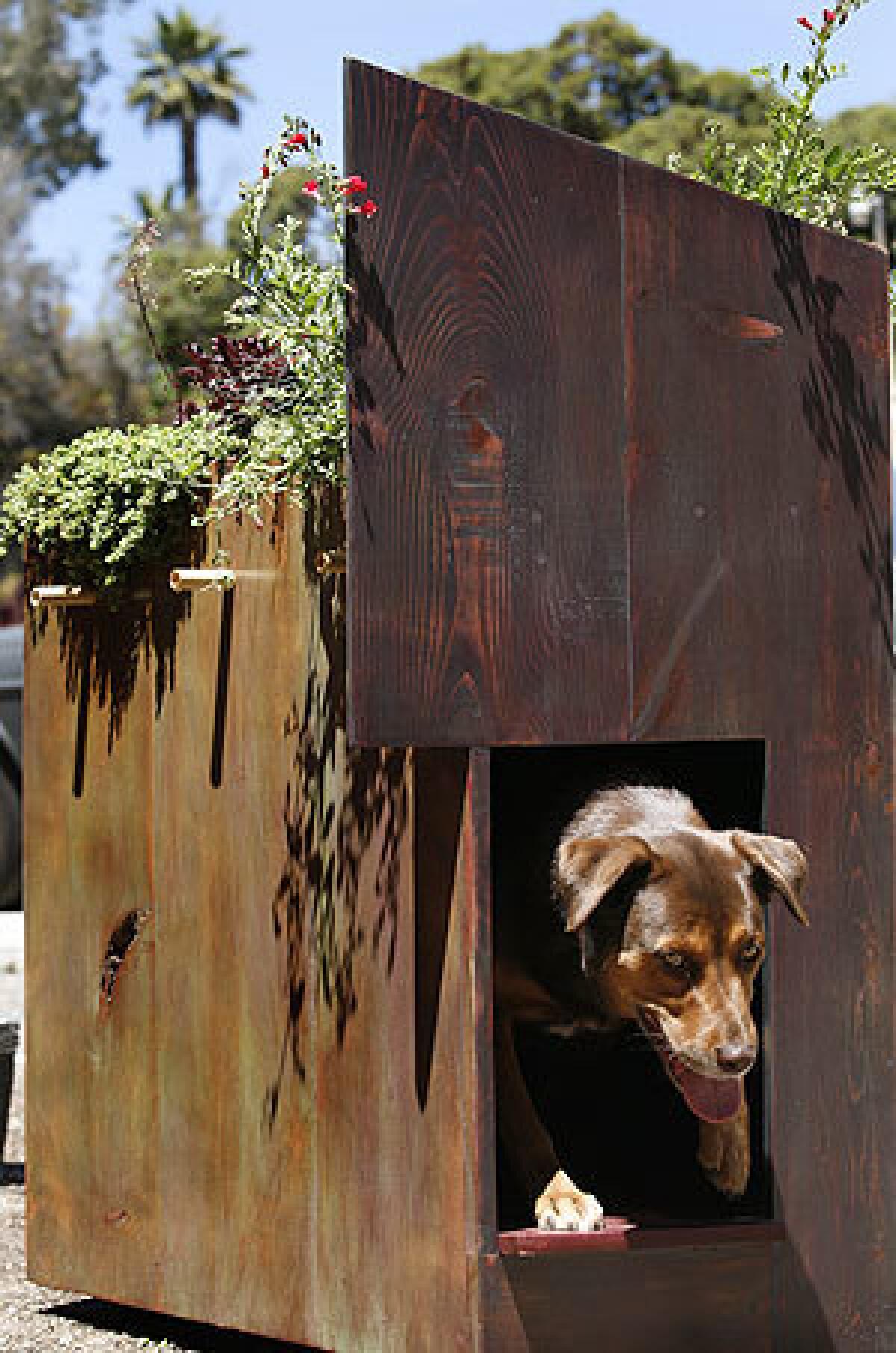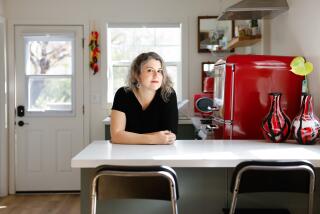Doghouses get a green roof with plants that cool the inside

GREEN roofs are good. They clean the air, cool the house below, provide rest stops for birds and butterflies. If you work well with wood and want to try a green roof, why not start by building one for your dog?
Landscape architect Stephanie Rubin and her partner, sculptor Chris Isner, sell doghouses with rooftop gardens for $1,000 to $4,000. Your homemade version will cost a lot less -- and the dog in residence will appreciate a plant-topped refuge that is cooler, in every sense of the word, than anything else around.
To start, Rubin and Isner suggest that you come up with your own general design or scan for ideas on their website, www.sustainablepet.com. They won’t mind if you filch. For a closer look at their doghouses, visit City Bakery in Brentwood.
The configuration of the walls will vary depending on the size of your pet, but the composition of the roof will remain the same: It must be shaped like a sandbox and sloped gently, a maximum of 20 degrees. At the bottom of the slope, drill holes for two or three bamboo drainage spouts that will pull water away from the doghouse. The size of the holes should be determined by the diameter of the bamboo, about three-fourths inch to 1 inch. Cut the bamboo into lengths that will extend about 3 inches out from the holes you drilled.
Be sure seams are well caulked and the wood is well glued with a nontoxic, waterproof wood glue such as Titebond III. The designers suggest building with Forest Stewardship Council-certified red cedar, which they say repels fleas and ticks. Or you can use reclaimed wood treated with a product such as Safecoat Safe Seal to prevent off-gassing. Finish the frame with nontoxic, eco-friendly paint, stain or varnish; Rubin and Isner get theirs at Architectural Coatings and Design Center in Tarzana.
Using a paintbrush, cover the rooftop with two layers of melted natural beeswax, available where candle supplies are sold. Or use a rubberized roofing compound that’s low in volatile organic compounds, or VOCs; one example is Elasto-Seal rubber undercoat primer by Snow Roof Systems.
Next add the drainage layer: Cover the roof’s surface with 1 inch of gravel or 1-inch-diameter bamboo stalks split lengthwise and placed cut-side down. Cut a piece of landscape fabric slightly larger than the roof; lay it over the gravel or bamboo. Glue excess fabric to the roof box to keep soil from creeping under.
On top of the fabric, add a 4-inch layer of planting medium -- 60% pumice, 10% sand and 30% soil rich in organic material. Rubin suggests Supersoil, available at garden stores.
Finally, the plants: Rubin’s rooftops are filled with pet-friendly, nonpoisonous, mostly native plants that require no pesticides or fertilizers. Her favorites include woodland strawberry (Fragaria vesca), beach strawberry (Fragaria chiloensis), stonecrop (Sedum, particularly S. acre), live forever (Dudleya), and common yarrow (Achillea millefolium). Sometimes she uses island bush snapdragon (Galvezia speciosa), coral bells (Heuchera) or blue fescue (Festuca glauca). All are watered as if they were growing in the ground.
More to Read
Sign up for our L.A. Times Plants newsletter
At the start of each month, get a roundup of upcoming plant-related activities and events in Southern California, along with links to tips and articles you may have missed.
You may occasionally receive promotional content from the Los Angeles Times.






